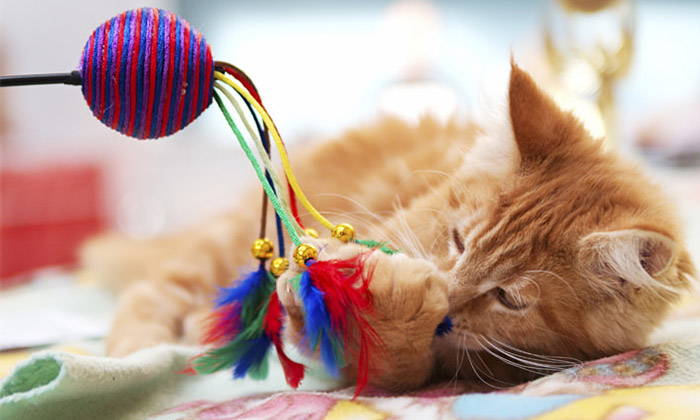Pet toy’s are more than just fun accessories; they play a crucial role in the physical and mental well-being of your furry friends. From providing exercise and mental stimulation to satisfying natural instincts, pet toys are essential for a happy and healthy pet. This comprehensive guide explores the benefits of pet toys, different types of toys available, factors to consider when choosing the right toys, and tips for ensuring safe and enjoyable playtime.
Benefits of Pet Toy’s
Pet toys offer numerous benefits that contribute to the overall well-being of your pet. Here are some of the key advantages:
- Physical Exercise:
- Regular playtime with toys encourages physical activity, which is essential for maintaining a healthy weight and preventing obesity. Active play helps build strong muscles, improve cardiovascular health, and enhance overall fitness.
- Mental Stimulation:
- Toys that challenge your pet’s mind, such as puzzle toys and interactive toys, provide mental stimulation. Mental exercise is crucial for preventing boredom, reducing stress, and keeping your pet’s mind sharp.
- Natural Instincts:
- Many toys cater to your pet’s natural instincts, such as hunting, chewing, and scratching. Providing outlets for these behaviors helps prevent destructive habits and promotes natural, healthy behavior.
- Bonding and Socialization:
- Playing with your pet using toys fosters bonding and strengthens the human-animal relationship. Interactive toys also encourage socialization, which is important for pets that may feel isolated or anxious.
- Dental Health:
- Chew toys can help maintain dental health by reducing plaque and tartar buildup, massaging gums, and preventing bad breath. Chewing also satisfies your pet’s need to gnaw and keeps their teeth strong.
Types of Pet Toy’s
There is a wide variety of pet toys available, each designed to cater to different play styles and needs. Here are some common types of pet toys:
- Chew Toys:
- Chew toys are designed for pets that love to gnaw and chew. They are typically made of durable materials like rubber, nylon, or natural fibers. Chew toys are great for dental health and can help alleviate teething pain in puppies.
- Interactive Toys:
- Interactive toys engage your pet’s mind and body. These toys often involve puzzles, treat-dispensing mechanisms, or moving parts that challenge your pet to solve problems and stay entertained.
- Fetch Toys:
- Fetch toys, such as balls and frisbees, are perfect for games of fetch. They encourage physical activity and can be used for outdoor play, helping your pet burn off excess energy.
- Plush Toys:
- Plush toys are soft, cuddly toys that many pets enjoy carrying, cuddling, or shaking. While not as durable as other toys, they provide comfort and can be used for gentle play or as companions for pets.
- Rope Toys:
- Rope toys are great for tug-of-war games and chewing. They are made of sturdy ropes that can withstand vigorous play and are often infused with flavors to make them more appealing to pets.
- Squeaky Toys:
- Squeaky toys have built-in squeakers that emit a sound when squeezed. The noise can excite and engage pets, making playtime more enjoyable. However, some pets may become fixated on the squeaker, so supervision is recommended.
- Puzzle Toys:
- Puzzle toys challenge your pet’s problem-solving skills by hiding treats or kibble inside compartments. Pets must figure out how to access the treats, providing mental stimulation and rewarding play.
- Cat Toys:
- Cat toys include items like feather wands, laser pointers, and catnip-filled toys. These toys cater to a cat’s hunting instincts and encourage physical activity and mental engagement.
Factors to Consider When Choosing Pet Toy’s
Selecting the right toys for your pet involves considering several factors to ensure they are safe, engaging, and suitable for your pet’s needs. Here are some key considerations:
- Pet’s Size and Age:
- Choose toys that are appropriate for your pet’s size and age. Small toys can pose a choking hazard for large pets, while large toys may be difficult for small pets to play with. Similarly, puppies and kittens may need softer toys for teething, while adult pets may require more durable options.
- Material and Durability:
- Select toys made from safe, non-toxic materials that can withstand your pet’s play style. Durable materials like rubber, nylon, and heavy-duty fabrics are ideal for aggressive chewers, while plush and soft toys are suitable for gentle play.
- Safety:
- Ensure the toys do not have small parts that can be swallowed or pose choking hazards. Regularly inspect toys for wear and tear, and replace damaged toys to prevent injury.
- Pet’s Play Preferences:
- Consider your pet’s play preferences and natural instincts when choosing toys. For example, dogs that enjoy fetching will benefit from balls and frisbees, while cats that love to hunt will enjoy feather wands and laser pointers.
- Interactive and Engaging:
- Opt for toys that provide mental stimulation and encourage interactive play. Puzzle toys, treat-dispensing toys, and interactive games can keep your pet engaged and mentally sharp.
- Cleaning and Maintenance:
- Choose toys that are easy to clean and maintain. Regular cleaning helps prevent the buildup of bacteria and keeps toys safe for your pet to use.
Tips for Safe and Enjoyable Playtime
Ensuring safe and enjoyable playtime with pet toys is essential for your pet’s well-being. Here are some tips to keep in mind:
- Supervise Play:
- Always supervise your pet during playtime, especially when introducing new toys. This helps prevent accidents and allows you to monitor your pet’s interaction with the toy.
- Rotate Toys:
- Keep playtime interesting by rotating toys regularly. Introducing new toys or rotating existing ones can prevent boredom and keep your pet engaged.
- Interactive Play:
- Engage in interactive play with your pet using toys. Activities like fetch, tug-of-war, and hide-and-seek can strengthen your bond and provide valuable exercise and mental stimulation.
- Use Treats Wisely:
- If using treat-dispensing toys, ensure the treats are healthy and used in moderation. Treats should complement your pet’s regular diet and not lead to overfeeding.
- Store Toys Properly:
- Store toys in a clean, dry place when not in use. This helps maintain their condition and prevents the spread of bacteria or germs.
- Monitor for Wear and Tear:
- Regularly inspect toys for signs of wear and tear. Replace damaged or broken toys to prevent injury and ensure safe play.
Conclusion
Pet toy’s are an essential part of pet care, providing physical exercise, mental stimulation, and opportunities for bonding. By understanding the different types of pet toys, considering your pet’s preferences and needs, and following safety tips, you can enhance your pet’s playtime and overall well-being. Investing in high-quality, engaging toys will ensure your furry friend stays happy, healthy, and entertained

